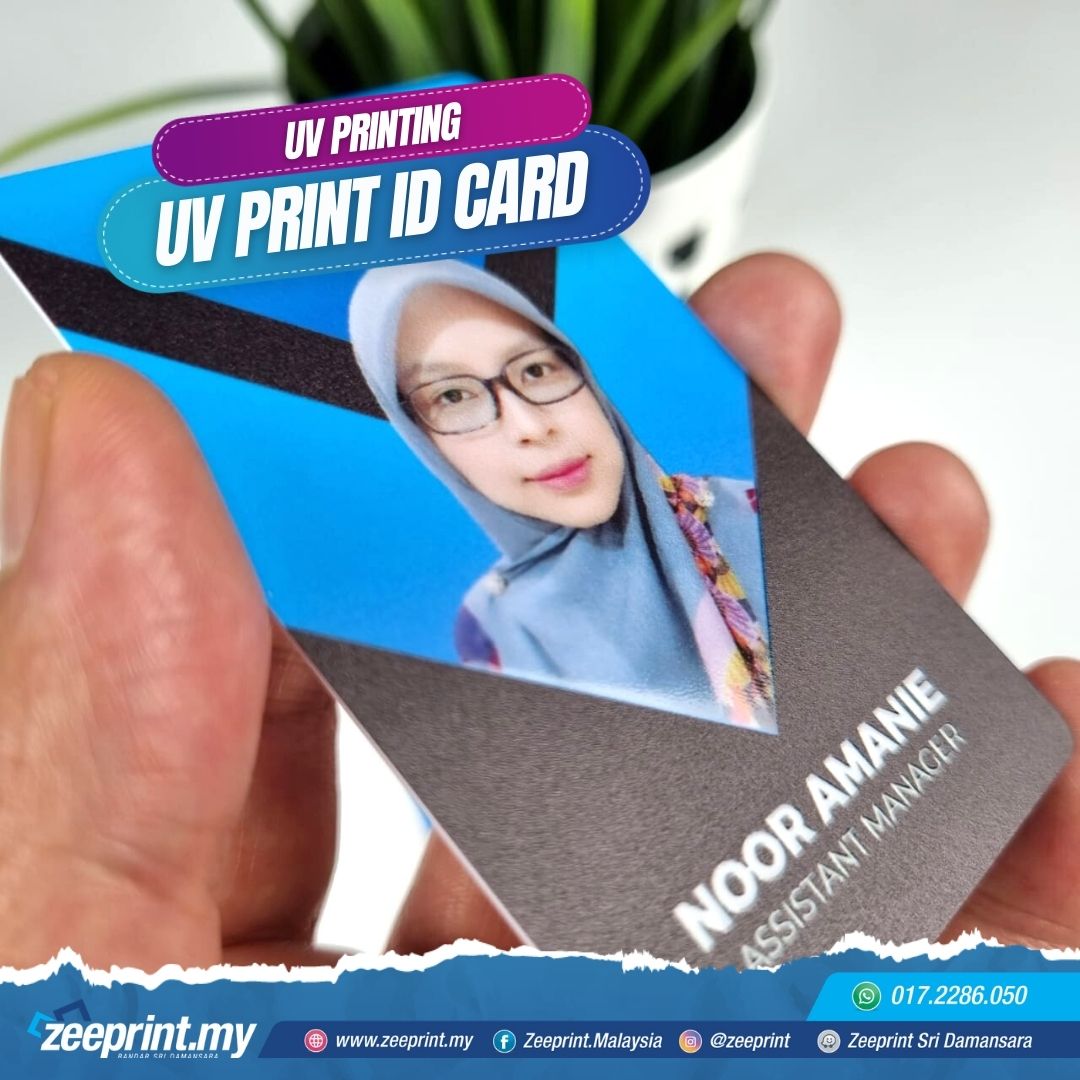How to print ID cards is a question many face, whether for business, events, or personal use. It seems simple, but there are nuances to ensure your ID cards are professional, secure, and long-lasting. From choosing the right equipment and software to designing and printing, we’ll explore every step, making the process straightforward and effective.
We’ll discuss different types of ID cards, their uses, and essential design elements. We’ll guide you through selecting the best printer and laminator, as well as essential software and accessories. You’ll learn to create stunning designs, incorporating security features and personalization, and master the printing and laminating process.
By the end, you’ll have the knowledge and confidence to print professional ID cards that meet your specific needs.
Understanding ID Card Printing

ID card printing is a crucial aspect of identification and access control in various sectors. Whether you need employee badges, student IDs, or membership cards, understanding the basics of ID card printing can help you make informed decisions.
Types of ID Cards and Their Uses
ID cards come in various forms, each serving a specific purpose. Here are some common types:
- Employee ID Cards:Used for employee identification, access control, and time tracking.
- Student ID Cards:Provide identification, access to facilities, and discounts.
- Membership Cards:Offer benefits, discounts, and access to exclusive services.
- Government-Issued ID Cards:Provide proof of identity and citizenship.
- Event or Conference Badges:Used for registration and access to events.
Essential Elements of a Standard ID Card Design
A well-designed ID card includes key elements to ensure security and usability:
- Personal Information:Name, photograph, ID number, and other relevant details.
- Security Features:Holograms, watermarks, and UV printing to prevent counterfeiting.
- Barcode or QR Code:Enables quick and easy scanning for verification and data access.
- Magnetic Stripe or Chip:Stores additional information for access control or payment purposes.
- Card Material:Durable PVC or other materials for longevity and resistance to wear and tear.
Benefits of Using Professional ID Card Printing Services
Professional ID card printing services offer numerous advantages:
- High-Quality Printing:Crisp, clear, and durable cards with professional finishes.
- Security Features:Access to advanced security features to protect against counterfeiting.
- Customization Options:Design flexibility to create unique and visually appealing cards.
- Time and Cost Savings:Outsourcing printing eliminates the need for in-house equipment and expertise.
- Expert Support:Professional assistance with design, printing, and implementation.
Choosing the Right Equipment
Printing ID cards involves more than just selecting a printer; it requires a thoughtful approach to equipment selection. The right tools can streamline your ID card printing process, ensuring high-quality cards and efficient production.
ID Card Printer Models, How to print id card
Understanding the features, printing technology, and cost of various ID card printer models is crucial for making an informed decision.
- Direct-to-Card Printers:These printers are the most common type for ID card printing. They use a ribbon to transfer ink directly onto the card. Direct-to-card printers are generally affordable and offer a good balance of features and cost. Examples include the Zebra ZXP Series 3, Evolis Primacy, and Fargo HDP5000.
- Re-transfer Printers:These printers offer higher print quality and durability than direct-to-card printers. They use a special film to transfer the ink onto the card, resulting in a more robust and scratch-resistant print. Re-transfer printers are often used for high-security applications, such as government IDs and driver’s licenses.
Examples include the Zebra ZXP Series 7 and Evolis Zenius.
- Dye-Sublimation Printers:Dye-sublimation printers produce high-quality, photo-realistic prints with vibrant colors. They use heat to transfer dye onto the card, resulting in a smooth and durable print. These printers are often used for applications where aesthetics are important, such as membership cards and event badges.
Examples include the Fargo HDP5000 and Evolis Primacy.
When choosing an ID card printer, consider factors like print quality, speed, durability, security features, and budget.
ID Card Laminators
Laminating your ID cards adds an extra layer of protection and enhances their durability. Different types of laminators cater to various needs.
- Thermal Laminators:These laminators use heat to melt a plastic film onto the card. Thermal laminators are affordable and easy to use.
- Cold Laminators:These laminators use a pressure-sensitive adhesive to attach a plastic film to the card. Cold laminators are ideal for applications where heat sensitivity is a concern.
- Hot/Cold Laminators:These laminators combine the features of thermal and cold laminators, allowing you to choose between heat-activated or pressure-sensitive lamination.
The type of laminator you choose will depend on your specific requirements, such as the level of protection needed and the budget.
Software and Accessories
Efficient ID card printing requires the right software and accessories.
- ID Card Design Software:This software allows you to create and customize your ID card designs. Many ID card printers come with their own software, while third-party options are also available.
- Database Integration:For large-scale ID card printing, integrating your ID card software with your existing database is essential. This allows you to automatically populate card data from your database, streamlining the printing process.
- Cardholders:Cardholders are essential for storing and protecting your ID cards. They come in various styles and materials, catering to different needs.
- Ribbons:ID card printers use ribbons to transfer ink onto the cards. Ribbons are available in different colors, types, and lengths.
- Cleaning Supplies:Regular cleaning of your ID card printer is crucial for maintaining optimal performance. Cleaning supplies include cleaning wipes, brushes, and solvents.
Investing in the right software and accessories can significantly enhance your ID card printing experience.
Designing and Creating ID Cards

Designing ID cards is an exciting process that allows you to create visually appealing and functional identification cards. By utilizing software applications and incorporating security features, you can produce professional-looking ID cards that meet your specific requirements.
Designing ID Cards with Software Applications
Several software applications are available for designing ID cards, each offering a range of features and functionalities. Popular options include Adobe Photoshop, Illustrator, and InDesign, which provide extensive design capabilities. Other specialized ID card software programs are designed specifically for creating ID cards, offering pre-built templates and features for adding security elements.
Step-by-Step Guide for Designing ID Cards
- Choose a Design Template:Start by selecting a pre-designed template from the software application or create a custom design from scratch. Templates provide a starting point and ensure consistency across your ID cards.
- Add Personalization Elements:Include essential information, such as name, employee ID, photograph, and other relevant details. Ensure the font size and style are legible and easy to read.
- Incorporate Security Features:Add security elements like holograms, watermarks, and microprinting to prevent counterfeiting and enhance the card’s authenticity.
- Choose Colors and Graphics:Select colors and graphics that reflect your organization’s brand identity and create a visually appealing design.
- Preview and Adjust:Preview the design on the screen and make any necessary adjustments to ensure the final product meets your expectations.
Importance of Using High-Quality Images and Templates
Using high-quality images and templates is crucial for creating professional-looking ID cards. High-resolution images ensure that details are clear and sharp, while well-designed templates provide a consistent and polished look.
High-Quality Images
- Resolution:Choose images with a high resolution (at least 300 DPI) for sharp printing. Low-resolution images can appear blurry or pixelated when printed.
- File Format:Use file formats like JPEG, PNG, or TIFF, which maintain image quality and support color depth.
- Image Editing:Edit images to optimize brightness, contrast, and color balance for a professional look.
Well-Designed Templates
- Layout:Templates provide a structured layout, ensuring all essential information is placed correctly and consistently.
- Font Choice:Templates often include appropriate font choices for readability and visual appeal.
- Branding:Templates can incorporate your organization’s logo and branding elements, creating a unified look.
Incorporating Security Features and Personalization Elements
Security features and personalization elements enhance the authenticity and security of ID cards.
Printing ID cards is a breeze these days, especially with wireless printers. If you’re wondering how these printers actually connect to your computer, check out this article on how does a wireless printer work. Once you’ve got the basics down, you can easily print your ID cards from any room in your house, no cables needed!
Security Features
- Holograms:Holograms are three-dimensional images that change appearance when viewed from different angles, making it difficult to counterfeit.
- Watermarks:Watermarks are subtle images embedded in the card’s background, visible when held up to light. They are difficult to reproduce without specialized equipment.
- Microprinting:Microprinting involves printing extremely small text, visible only under magnification, making it difficult to counterfeit.
- UV Printing:UV printing uses inks that fluoresce under ultraviolet light, creating hidden images or patterns visible only under UV light.
Personalization Elements
- Unique ID Numbers:Assign each ID card a unique identification number to prevent duplication.
- Barcodes and QR Codes:Barcodes and QR codes can store additional information, such as employee data or access permissions.
- Signatures:Include a signature line for authorized personnel to sign, further verifying the card’s authenticity.
- Photographs:Use high-quality photographs to ensure clear identification.
Printing and Laminating ID Cards: How To Print Id Card

Now that you’ve chosen your equipment and designed your ID cards, it’s time to put them into production. This section covers the printing and laminating processes, helping you achieve professional-looking and durable ID cards.
Printing ID Cards
Printing ID cards involves selecting the right card stock and printing method to achieve the desired quality and durability.
- Card Stock Types:Different types of card stock are available, each offering unique properties.
- PVC (Polyvinyl Chloride):PVC cards are durable, waterproof, and resistant to tearing, making them suitable for high-usage ID cards.
- PET (Polyethylene Terephthalate):PET cards are thinner and more flexible than PVC cards, offering a good balance between durability and cost-effectiveness.
- Composite Cards:These cards combine different materials, such as PVC and PET, to offer specific advantages. For example, some composite cards feature a PVC core for durability and a PET surface for better print quality.
- Printing Methods:Choose the printing method that best suits your needs and budget.
- Dye-Sublimation Printing:This method produces high-quality, vibrant colors and sharp details. Dye-sublimation printers use heat to transfer dye onto the card, resulting in a durable and fade-resistant print.
- Direct-to-Card Printing:This method uses a specialized printer to print directly onto the card stock. Direct-to-card printers are often used for high-volume printing and can produce cards with unique designs and textures.
- Offset Printing:Offset printing is a traditional printing method used for large-scale production. It offers high-quality printing at a lower cost per card, but it requires a higher minimum order quantity.
Laminating ID Cards
Laminating ID cards adds a protective layer that enhances their durability and longevity.
- Laminating Techniques:Different laminating techniques offer varying levels of protection and aesthetic effects.
- Hot Laminating:This technique uses heat and pressure to fuse a plastic film to the card, creating a durable and waterproof seal. Hot laminating is suitable for high-usage ID cards and can be done with different film thicknesses.
- Cold Laminating:This technique uses a pressure-sensitive adhesive to bond a film to the card. Cold laminating is faster and easier than hot laminating, but it offers less protection.
- Embossing:Embossing adds a raised design or text to the card, enhancing its visual appeal and security. Embossing can be done before or after laminating.
- Laminating Film Options:Laminating films come in various thicknesses, finishes, and colors.
- Matte Finish:Matte films provide a subtle, non-reflective finish, reducing glare and fingerprints.
- Gloss Finish:Gloss films offer a high-shine finish, enhancing the vibrancy of colors and making the card more visually appealing.
- Holographic Films:Holographic films add a security feature to the card, making it difficult to counterfeit. They can be incorporated into the design or used as a separate layer.
Troubleshooting Printing and Laminating Issues
Printing and laminating ID cards can present challenges.
- Print Quality Issues:
- Faint or Blurry Print:Check the print head alignment, ink levels, and card stock quality. Ensure the card stock is compatible with the printer.
- Streaks or Lines:Clean the print head and check for any debris in the printer. Make sure the card stock is properly loaded.
- Color Mismatch:Calibrate the printer and ensure the color profile matches the desired output.
- Laminating Issues:
- Air Bubbles:Ensure the card is flat and free of debris before laminating. Use a laminating pouch that is slightly larger than the card to allow for air to escape.
- Uneven Laminating:Check the laminator’s temperature and pressure settings. Make sure the card is properly centered in the laminator.
- Wrinkled or Blistered Laminate:Use a laminating pouch that is compatible with the laminator. Avoid using excessive heat or pressure.
Best Practices for ID Card Printing

Printing high-quality ID cards requires more than just choosing the right equipment and design. Following best practices ensures your cards are professional, secure, and last longer.
Ensuring High-Quality ID Card Printing
It’s essential to establish a checklist of steps to ensure high-quality ID card printing. This helps maintain consistency and reduces errors.
- Use High-Resolution Images:Blurry images on ID cards look unprofessional. Ensure all images are at least 300 DPI (dots per inch) for crisp results.
- Calibrate Your Printer:Regular printer calibration ensures accurate color reproduction and prevents fading or color shifts over time.
- Test Print Before Bulk Production:Always print a test card to verify the design, colors, and card stock quality before printing a large batch.
- Use Durable Card Stock:Choose card stock specifically designed for ID cards, as it’s more resistant to wear and tear.
- Properly Align Cards in the Printer:Misaligned cards can lead to uneven printing or cuts, so ensure they are correctly placed before printing.
Security Measures and Data Protection
Security is paramount when printing ID cards, especially if they contain sensitive information. Here’s how to implement robust security measures:
- Use Security Features:Incorporate features like holograms, watermarks, or UV-sensitive inks to deter counterfeiting.
- Control Access to Printing Equipment:Restrict access to the printer and card stock to authorized personnel only.
- Securely Store Data:Protect personal data by storing it on secure servers and using strong passwords.
- Destroy Old Cards:Dispose of outdated or expired ID cards securely to prevent unauthorized use or identity theft.
Storing and Managing Printed ID Cards
Proper storage and management of printed ID cards are crucial for their longevity and security.
- Use a Secure Storage System:Store cards in a locked cabinet or drawer to prevent theft or unauthorized access.
- Organize Cards Effectively:Develop a system for organizing cards based on employee ID, department, or other relevant criteria.
- Implement a Card Management System:Consider using software to track card issuance, expiration dates, and other important information.
- Regularly Audit Card Inventory:Periodically check card inventory to ensure all cards are accounted for and prevent unauthorized duplication.
Quick FAQs
What types of ID cards can I print?
You can print various types of ID cards, including employee badges, student IDs, membership cards, event passes, and more.
What are the essential security features for ID cards?
Essential security features include holograms, watermarks, UV ink, and microprinting to prevent counterfeiting.
Can I design my own ID cards?
Yes, many software programs allow you to design your own ID cards with custom layouts and templates.
What kind of laminator should I use?
The best laminator depends on your needs. Hot laminators offer durable protection, while cold laminators provide a smoother finish.
How do I troubleshoot printing problems?
Common issues include paper jams, ink cartridge problems, and printer settings. Consult your printer manual for troubleshooting tips.
